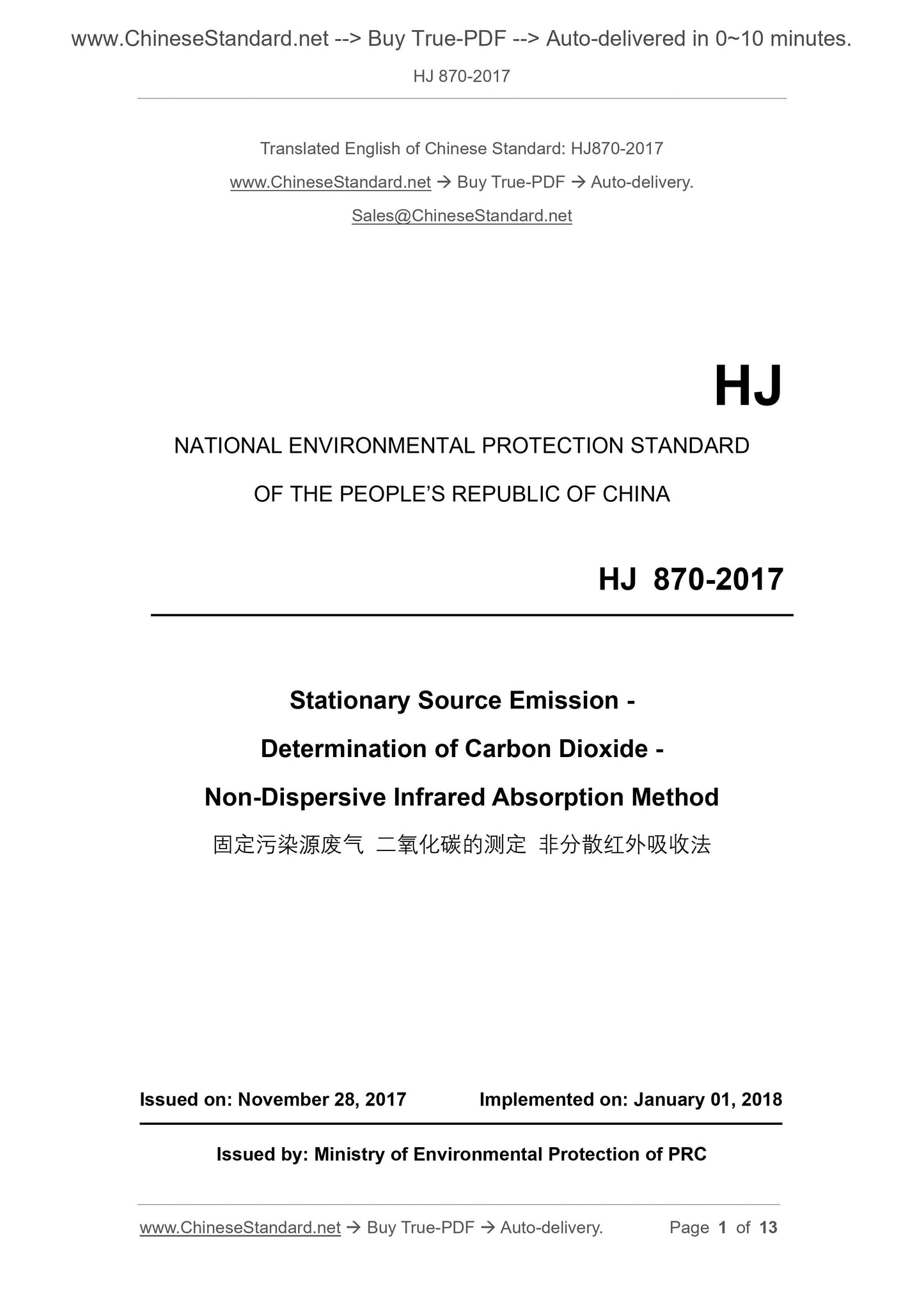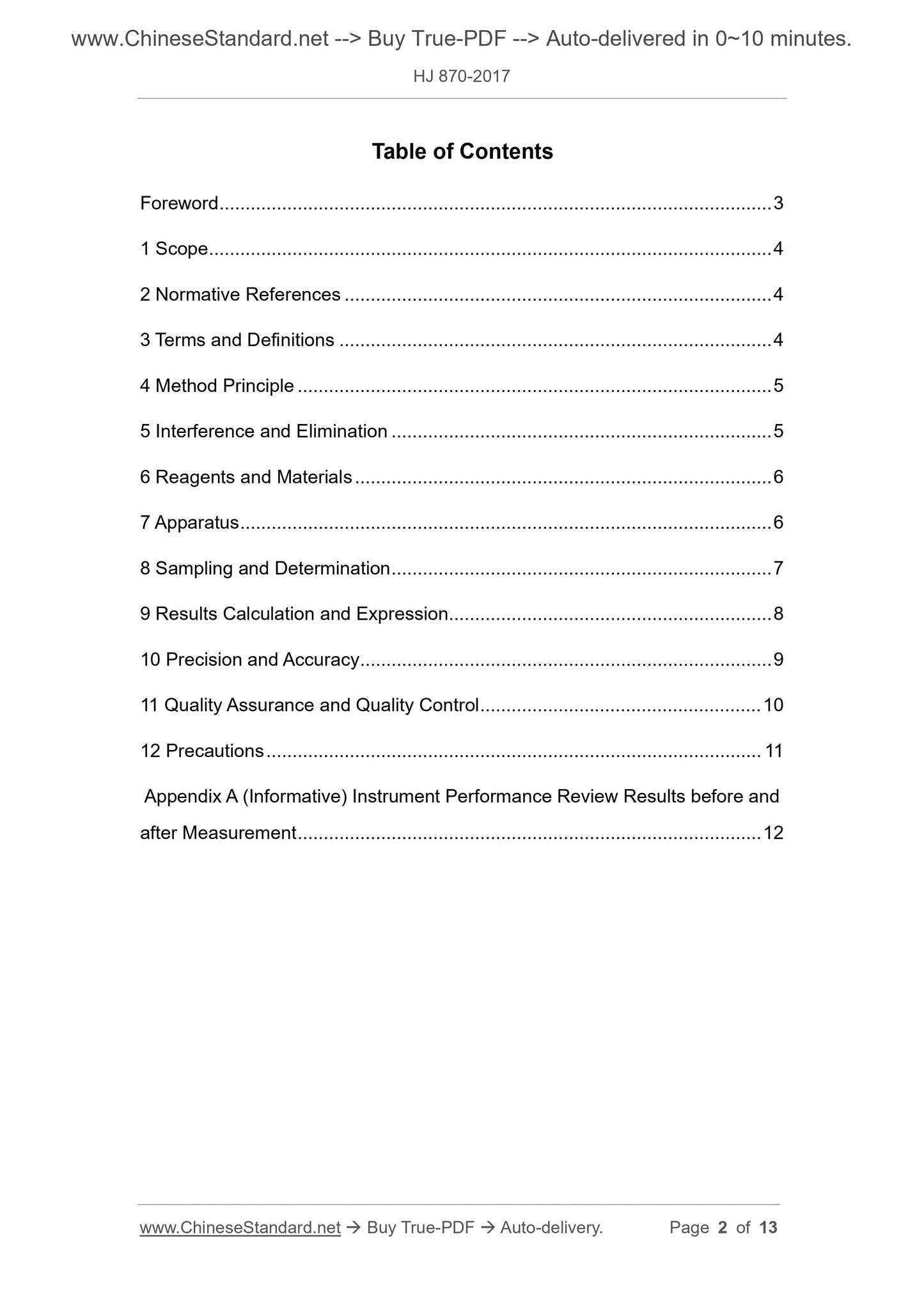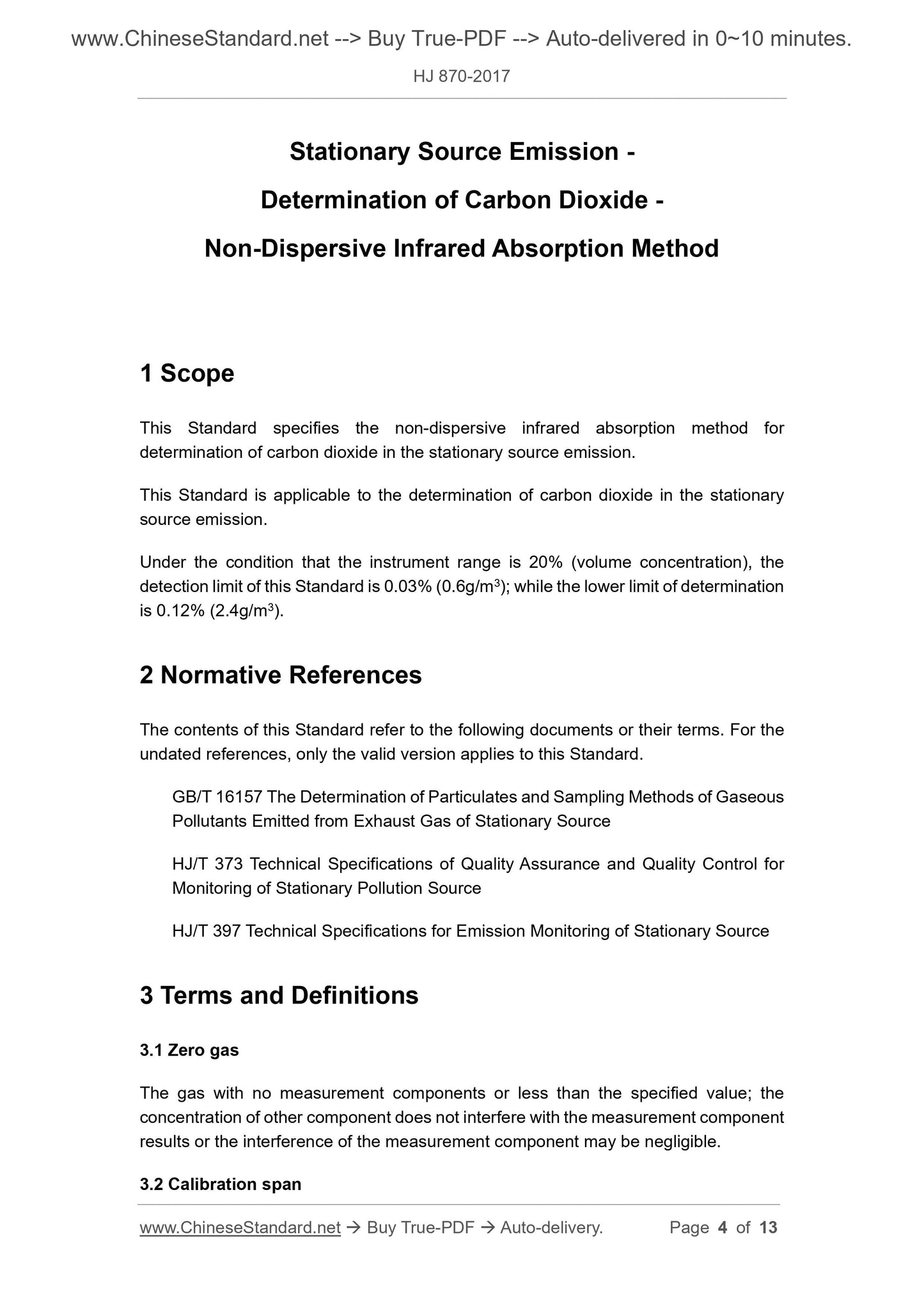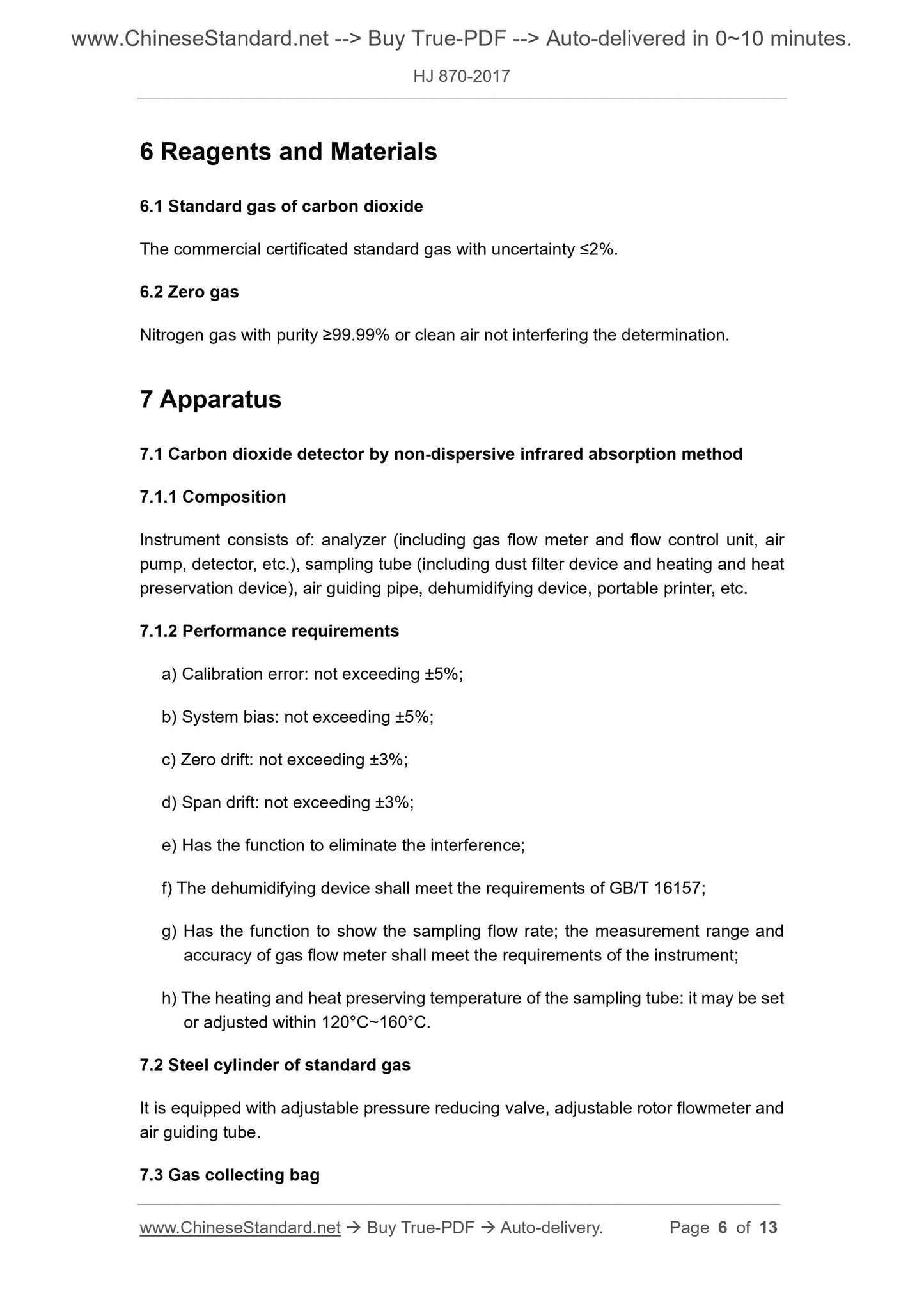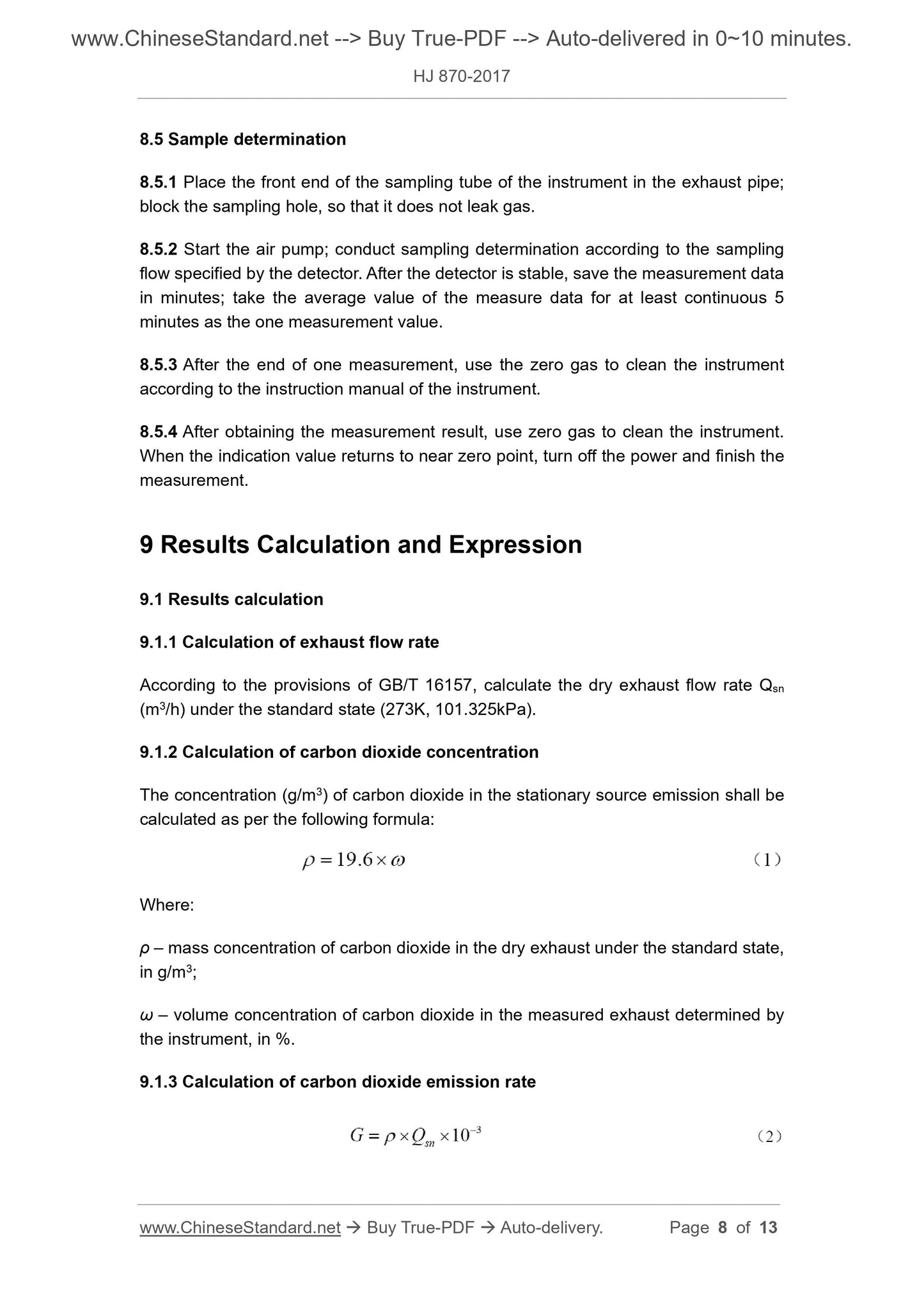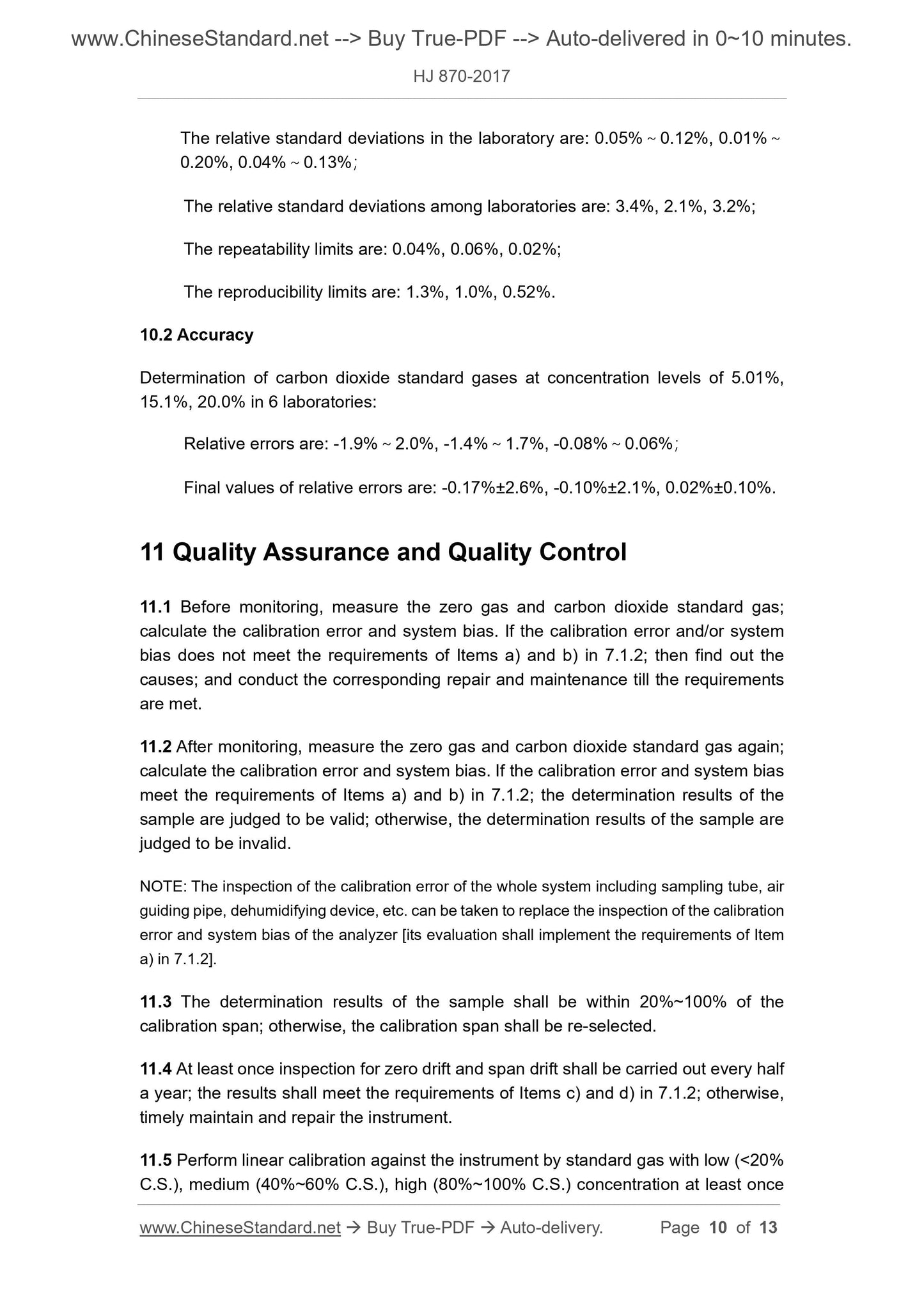1
/
of
6
www.ChineseStandard.us -- Field Test Asia Pte. Ltd.
HJ 870-2017 English PDF
HJ 870-2017 English PDF
Regular price
$125.00
Regular price
Sale price
$125.00
Unit price
/
per
Shipping calculated at checkout.
Couldn't load pickup availability
HJ 870-2017: Stationary Source Emission - Determination of Carbon Dioxide - Non-Dispersive Infrared Absorption Method
Delivery: 9 seconds. Download (and Email) true-PDF + Invoice.Get Quotation: Click HJ 870-2017 (Self-service in 1-minute)
Newer / historical versions: HJ 870-2017
Preview True-PDF
Scope
This Standard specifies the non-dispersive infrared absorption method fordetermination of carbon dioxide in the stationary source emission.
This Standard is applicable to the determination of carbon dioxide in the stationary
source emission.
Under the condition that the instrument range is 20% (volume concentration), the
detection limit of this Standard is 0.03% (0.6g/m3); while the lower limit of determination
is 0.12% (2.4g/m3).
Basic Data
| Standard ID | HJ 870-2017 (HJ870-2017) |
| Description (Translated English) | Stationary Source Emission - Determination of Carbon Dioxide - Non-Dispersive Infrared Absorption Method |
| Sector / Industry | Environmental Protection Industry Standard |
| Classification of Chinese Standard | Z15 |
| Classification of International Standard | 13.040.40 |
| Word Count Estimation | 10,114 |
| Date of Issue | 2017-11-28 |
| Date of Implementation | 2018-01-01 |
| Quoted Standard | GB/T 16157; HJ/T 373; HJ/T 397 |
| Regulation (derived from) | Ministry of Environmental Protection Announcement 2017 No. 59 |
| Issuing agency(ies) | Ministry of Ecology and Environment |
| Summary | This standard specifies a non-dispersive infrared absorption method for the determination of carbon dioxide in stationary sources of exhaust gas. This standard applies to the determination of carbon dioxide in fixed sources of exhaust gas. When the instrument's range value is 20% (volume concentration), the detection limit of this method is 0.03% (0.6 g/m^(3)) The lower limit of determination is 0.12% (2.4 g/m^(3)). |
Share
